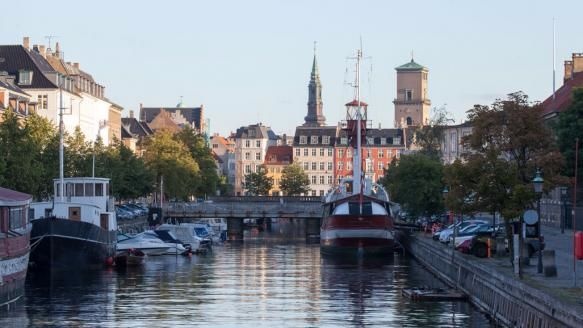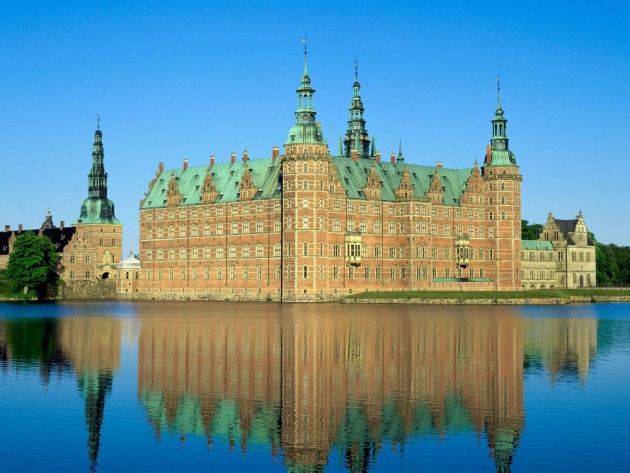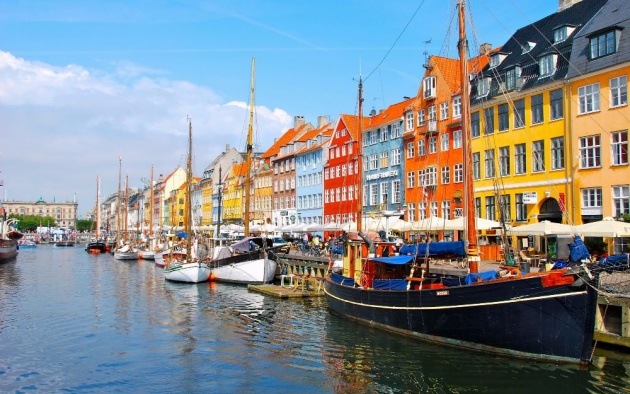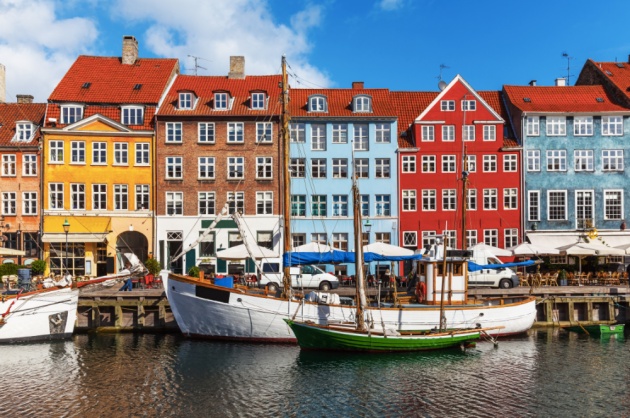Denmark ( i/ˈdɛnmɑːrk/; Danish: Danmark [ˈd̥ænmɑɡ̊] ( listen)), officially the Kingdom of Denmark[N 9] is a country in Northern Europe. The southernmost of the Nordic countries, it is southwest of Sweden and south of Norway, and bordered to the south byGermany. Denmark is part of Scandinavia, together with Sweden and Norway. It is a sovereign state that comprises Denmark and two autonomous constituent countries in the North Atlantic Ocean: the Faroe Islands and Greenland. Denmark proper has an area of 42,924 square kilometres (16,573 sq mi),[2] and a population of 5,699,220 in October 2015.[3] The country consists of a peninsula –Jutland – and an archipelago of 443 named islands,[9] of which around 70 are inhabited. The islands are characterised by flat, arable land and sandy coasts, low elevation and a temperate climate.
The unified kingdom of Denmark emerged in the 8th century as a proficient seafaring nation in the struggle for control of the Baltic Sea. Danish monarchs ruled the personal Kalmar Union, established in 1397 (of Denmark, Norway and Sweden), which ended with Swedish secession in 1523. Denmark and Norway remained under the same king until the union was dissolved by outside forces in 1814. Caused by the Black Death, the deterioration of the Kingdom of Norway made it possible for Denmark to inherit an expansive colonial empire from this union, of which the Faroe Islands and Greenland are remnants. Beginning in the 17th century, there were several cessions of territory; these culminated in the 1830s with a surge of nationalist movements, which were defeated in the 1864Second Schleswig War. Denmark remained neutral during World War I. In April 1940, a German invasion saw brief military skirmishes while the Danish resistance movement was active from 1943 until the German surrender in May 1945. An industrialized exporter of agricultural produce in the second half of the 19th century, Denmark introduced social and labour-market reforms in the early 20th century that created the basis for the present welfare state model with a highly developed mixed economy.
The Constitution of Denmark was signed on 5 June 1849, ending the absolute monarchy which had begun in 1660. It establishes aconstitutional monarchy—the current monarch is Queen Margrethe II—organised as a parliamentary democracy. The governmentand national parliament are seated in Copenhagen, the nation's capital, largest city and main commercial centre. Denmark[N 2]exercises hegemonic influence in the Danish Realm, devolving powers to handle internal affairs. Denmark became a member of theEuropean Economic Community in 1973, maintaining certain opt-outs; it retains its own currency, the krone. It is among the founding members of NATO, the Nordic Council, the OECD, OSCE, and the United Nations; it is also part of the Schengen Area.
Danes enjoy a high standard of living and the country ranks highly in some metrics of national performance, including education,health care, protection of civil liberties, democratic governance, prosperity and human development.[10][11][12] Denmark is frequently ranked as one of the happiest countries in the world in cross-national studies of happiness.[13][14] The country ranks as having the world's highest social mobility,[15] a high level of income equality,[16] has one of the world's highest per capita incomes, the least corrupt country in the world, and has one of the world's highest personal income tax rates.[17] A large majority of Danes are members of the National Church, though the Constitution guarantees freedom of religion.







